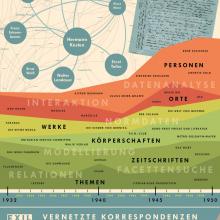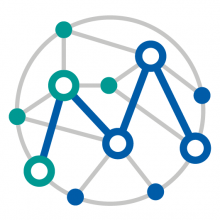Data Retrieval
Disclosing Information Structures
In computer science, data modeling means algorithms and processes for the formal description of the objects relevant for a specific reference space via their properties and relationships with one another. The decisive factor is the clear definition and specification of the information units to be managed. The result of the analysis step are data models that are usually mapped using description methods based on formal grammars (e.g. XML schema).
Such data models usually have a significantly longer lifespan than functional and processor-based descriptions and, thus, software. The semantic data processing also takes up natural concepts and is based on the functioning of the human brain, where, for example, words and their semantics are not stored in a completely unorganized way, but are already arranged in a network, so that the meaning of a word is presented methodically and formally by nodes (information units) and edges (relationships).
Such graph models, thus, allow innovative access to knowledge in general as well as to philological, cultural-historical and social-scientific data in particular. Furthermore, they raise their development and representation to a new level and form an enormous potential for current research questions in the areas of data analysis and enrichment , representation and networking. The range of modeling includes text data as well as multimedia objects, for example audio and video sequences, image data or three-dimensional artifacts.





